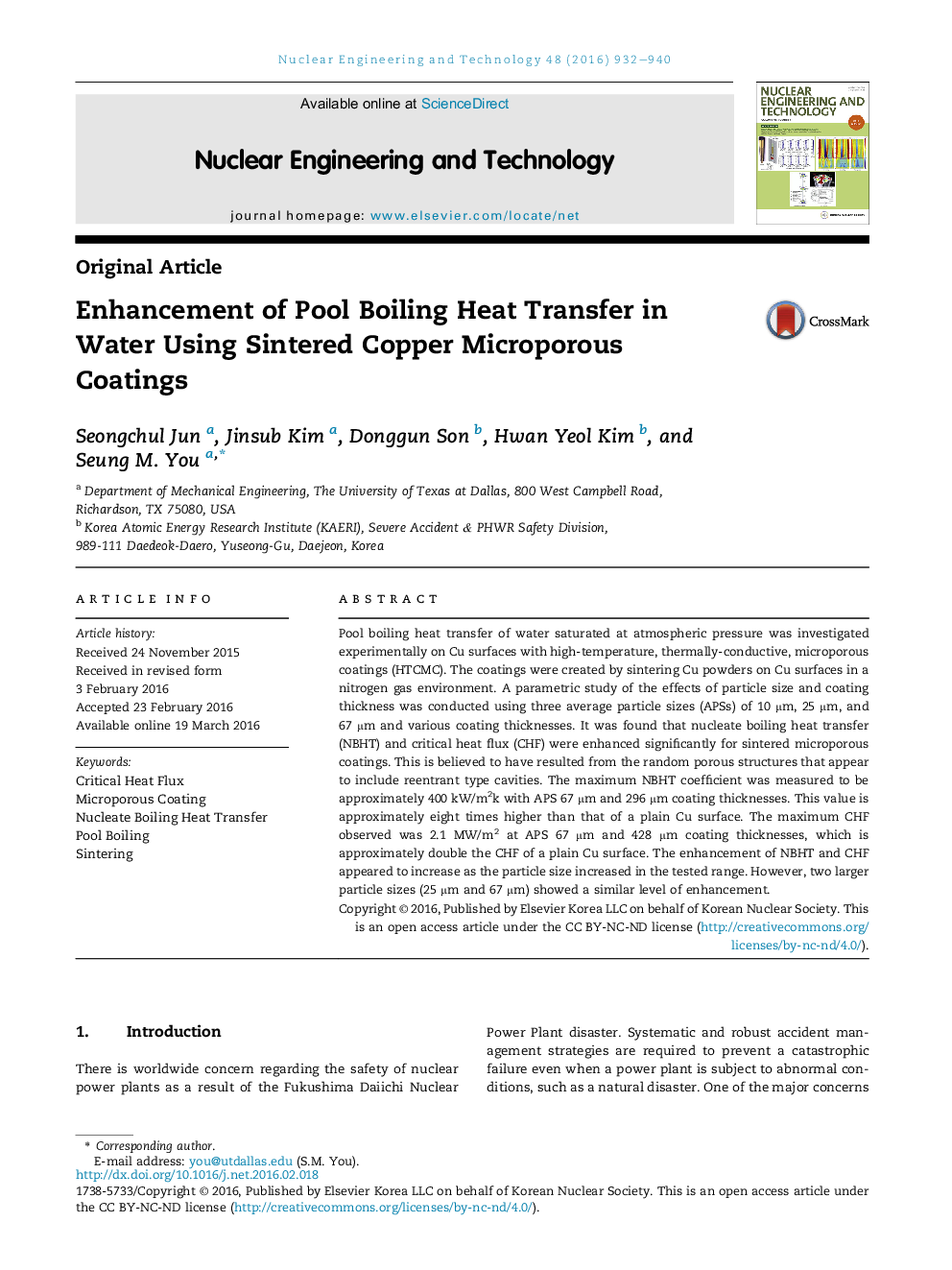| Article ID | Journal | Published Year | Pages | File Type |
|---|---|---|---|---|
| 1739834 | Nuclear Engineering and Technology | 2016 | 9 Pages |
Pool boiling heat transfer of water saturated at atmospheric pressure was investigated experimentally on Cu surfaces with high-temperature, thermally-conductive, microporous coatings (HTCMC). The coatings were created by sintering Cu powders on Cu surfaces in a nitrogen gas environment. A parametric study of the effects of particle size and coating thickness was conducted using three average particle sizes (APSs) of 10 μm, 25 μm, and 67 μm and various coating thicknesses. It was found that nucleate boiling heat transfer (NBHT) and critical heat flux (CHF) were enhanced significantly for sintered microporous coatings. This is believed to have resulted from the random porous structures that appear to include reentrant type cavities. The maximum NBHT coefficient was measured to be approximately 400 kW/m2k with APS 67 μm and 296 μm coating thicknesses. This value is approximately eight times higher than that of a plain Cu surface. The maximum CHF observed was 2.1 MW/m2 at APS 67 μm and 428 μm coating thicknesses, which is approximately double the CHF of a plain Cu surface. The enhancement of NBHT and CHF appeared to increase as the particle size increased in the tested range. However, two larger particle sizes (25 μm and 67 μm) showed a similar level of enhancement.
